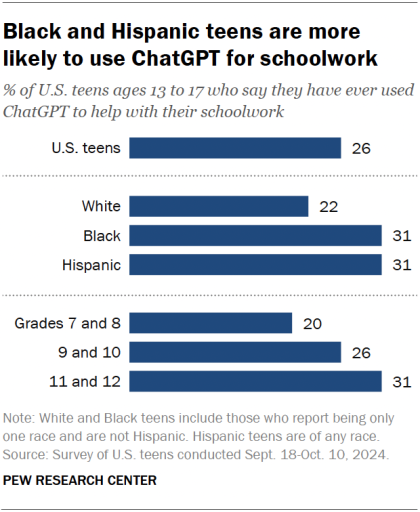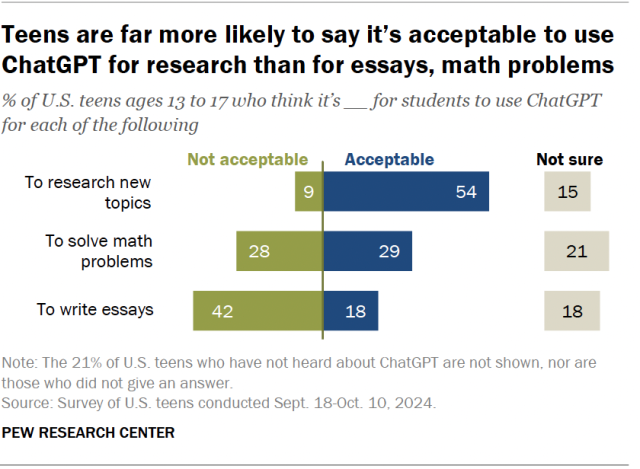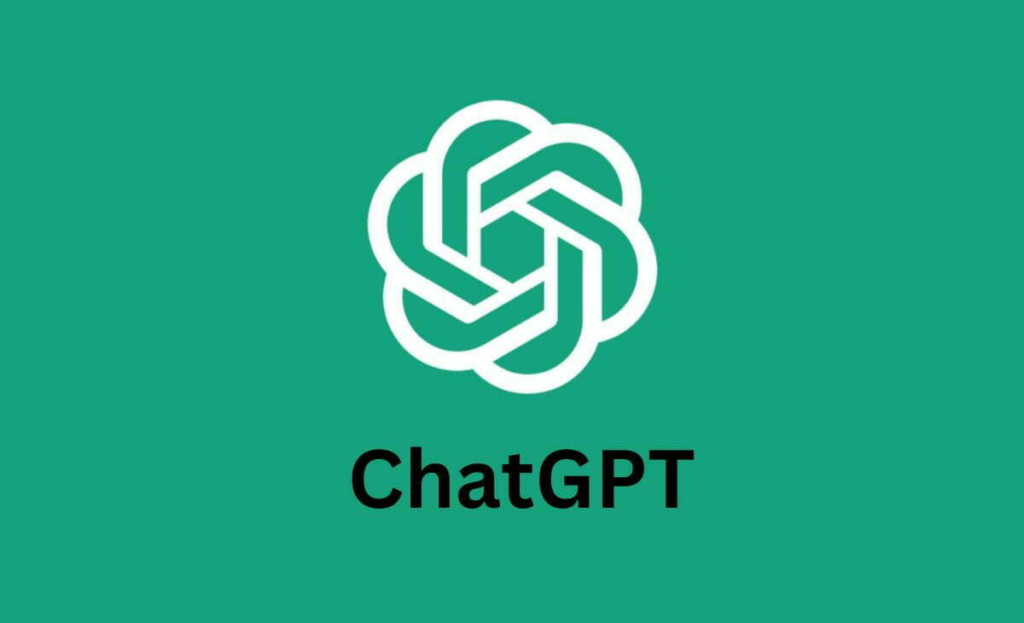ChatGPT usage among U.S. teens for schoolwork has doubled to 26% in 2024, with older students and Black and Hispanic teens leading the trend. Awareness and debates on its role grow.
A new report from Pew Research Center indicates that the use of ChatGPT among U.S. teens for schoolwork has doubled in just a year, according to a Pew Research Center survey. The share of teens aged 13 to 17 who say they use the AI chatbot for academic tasks has risen to 26% in 2024, up from 13% in 2023. Despite this increase, most teens (73%) have yet to turn to ChatGPT for school-related purposes.

Black and Hispanic teens lead the way in using ChatGPT for schoolwork, with 31% of each group reporting usage. In contrast, only 22% of White teens have done the same. This marks a significant shift from 2023, when usage was similar across these groups: 11% of White teens, 13% of Black teens, and 11% of Hispanic teens reported using the chatbot.

Older teens are more likely to use ChatGPT for school tasks. Usage rates are highest among 11th and 12th graders (31%), followed by ninth and 10th graders (around 25%), and seventh and eighth graders (20%). Interestingly, teens’ use of ChatGPT does not vary significantly by gender or household income.
Teens show varying levels of support for using ChatGPT in different academic scenarios. Over half (54%) believe it’s acceptable to use ChatGPT to research new topics, with only 9% opposing its use for this purpose. Opinions are more divided on using ChatGPT for math problems, with 29% saying it’s acceptable and 28% disapproving. Just 18% think using ChatGPT to write essays is acceptable, while 42% disapprove. A significant portion of teens (15% to 21%) remains unsure about whether it’s appropriate to use ChatGPT for these tasks.

Awareness of ChatGPT among teens has surged in the past year. In 2024, 79% of teens say they have heard of the chatbot, up from 67% in 2023. Furthermore, familiarity with ChatGPT has grown: 32% of teens now say they have heard “a lot” about it, compared to 23% last year. Teens who are more familiar with ChatGPT are likelier to use it for schoolwork, with 56% of those who have heard “a lot” about ChatGPT reporting usage for school-related tasks. This share drops to 18% among those who have heard only “a little” about the chatbot.

Familiarity also influences opinions on its acceptability. For example, 79% of teens who have heard a lot about ChatGPT think it’s fine to use it for research, compared to 61% of those less familiar with the tool.
White teens (83%) are more likely to have heard of ChatGPT than Black (73%) and Hispanic teens (74%). Teens from higher-income households are the most aware of ChatGPT, with 84% of teens in households earning $75,000 or more being familiar with it. Awareness among teens from lower-income households grew the most in the past year, jumping 26 percentage points—from 41% in 2023 to 67% in 2024. In comparison, awareness grew by 11 points among middle-income teens and 9 points among those in higher-income households.

The rise in ChatGPT’s use among teens highlights its growing role in education. While many teens see it as a valuable research tool, its acceptability for tasks like math and essay writing remains debated. As awareness and familiarity continue to grow, discussions about the ethical and practical implications of using AI tools in education are likely to intensify.
Read Also: FG adds GSM repairs, makeup, plumbing, 12 others to basic education curriculum
Read Also: Shettima: Nigeria to lead Africa’s growth through education, innovation in agriculture



